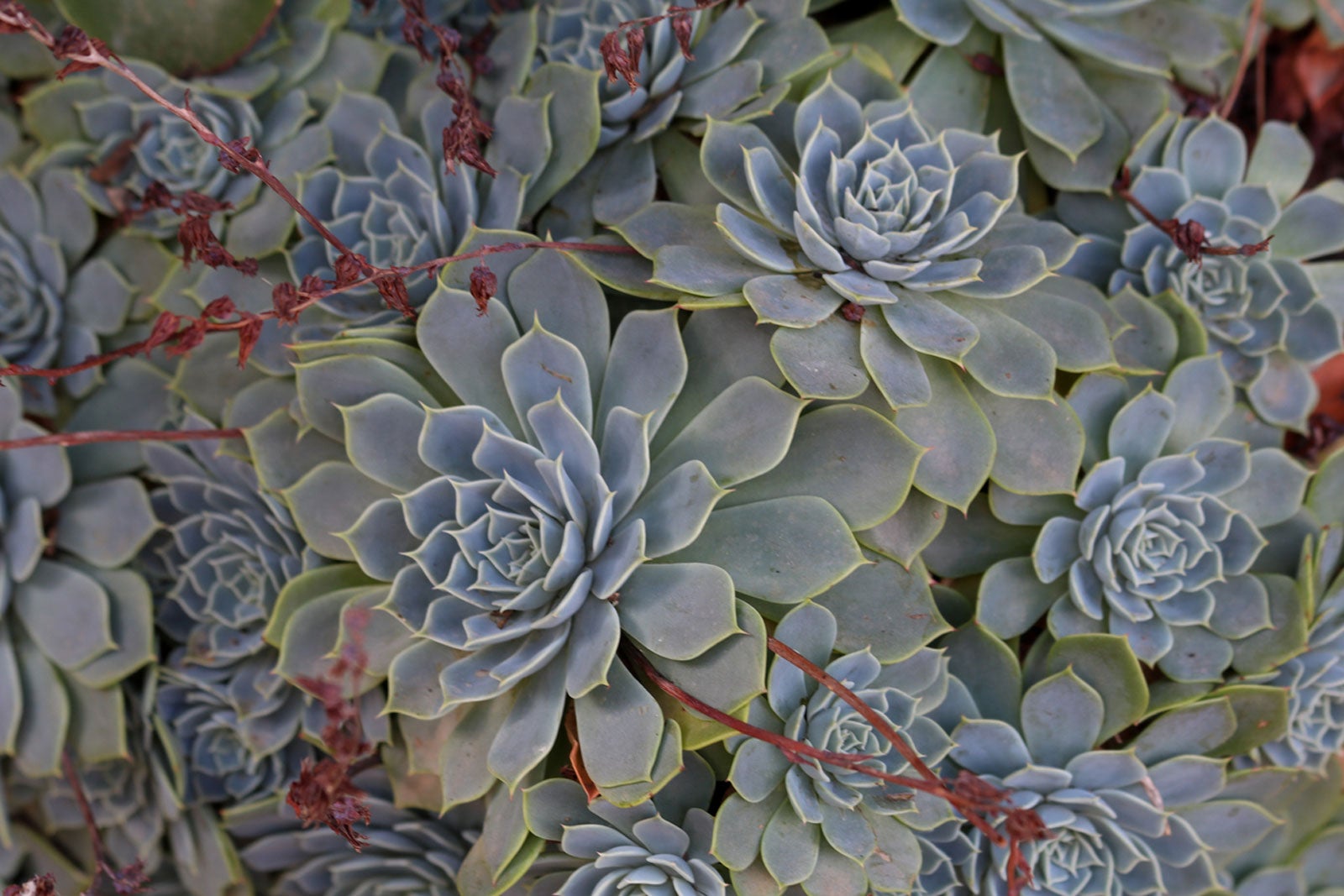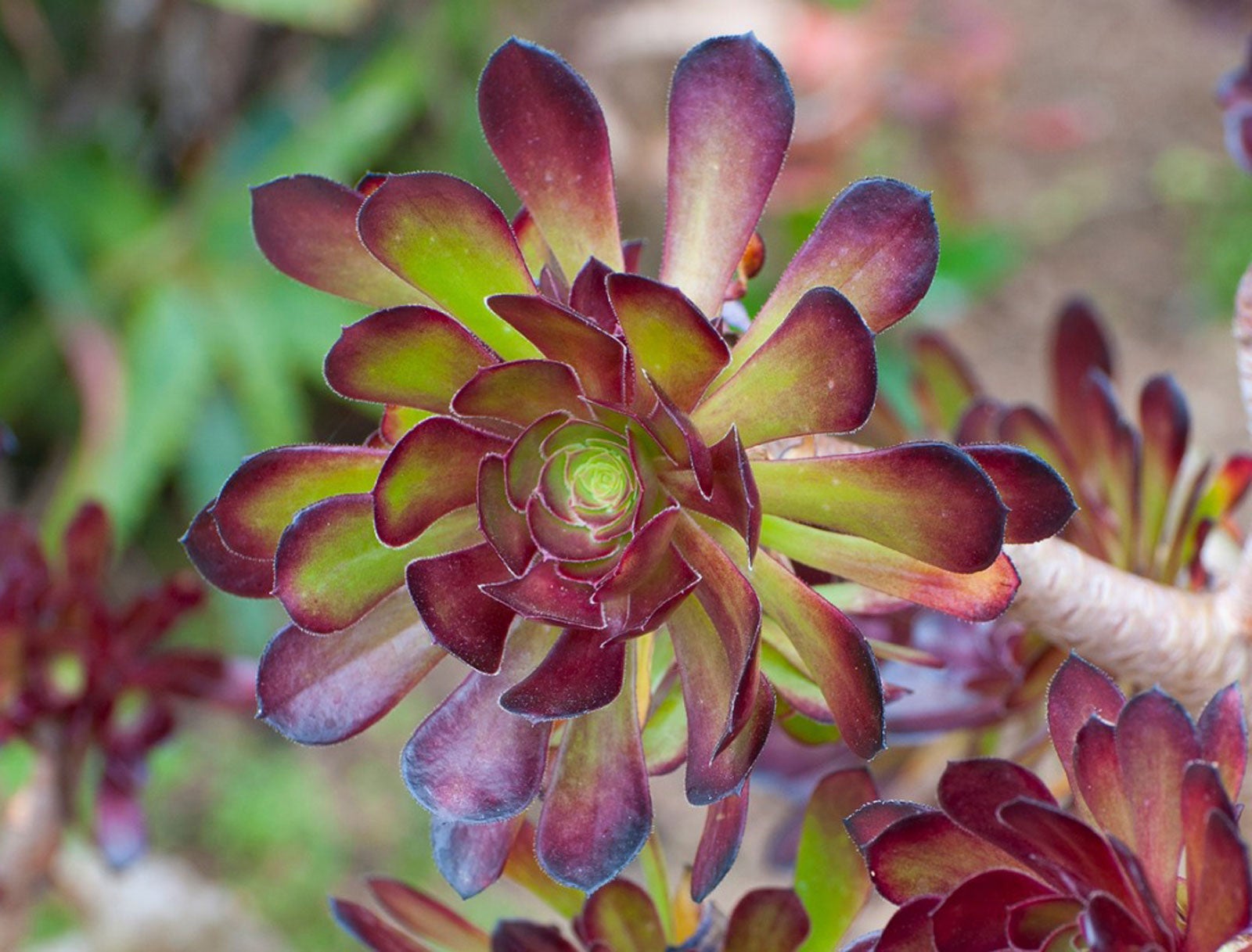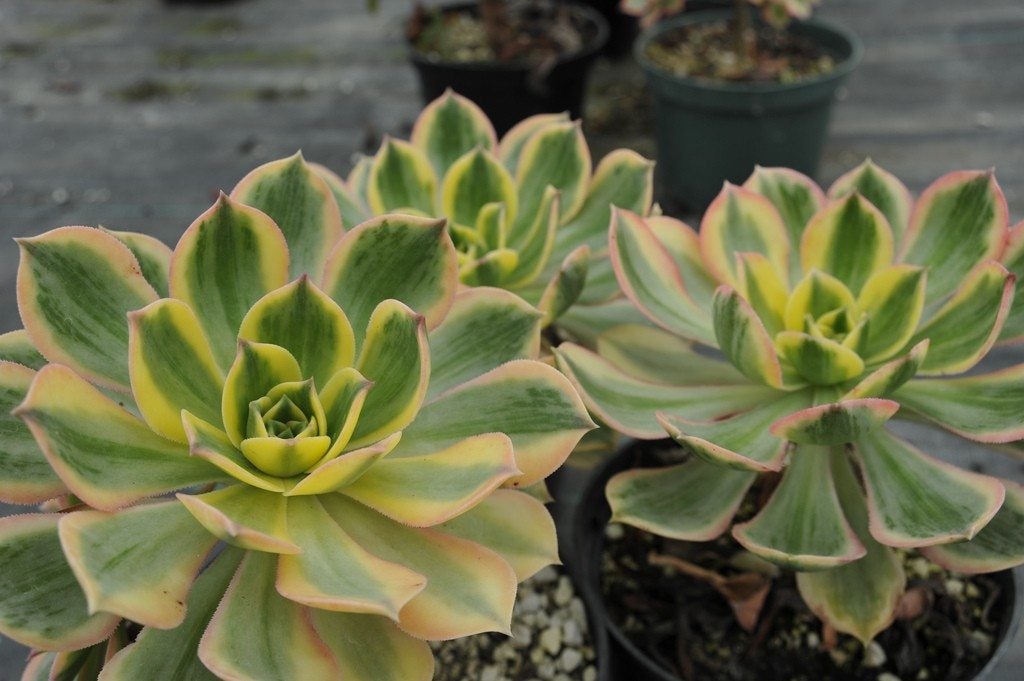Pinwheel Aeonium Care: How To Grow A Pinwheel Plant


An attractive spreading plant, the pinwheel aeonium can grow happily in the ground or a container in shady to sunny spots. As winter growers, these branch freely and may reach two feet (0.5 m.) in conditions that mimic their native area.
What is a Pinwheel Plant?
The pinwheel plant is a multi-branched, shrub-like succulent and member of the Crassulaceae family. From Tenerife in the Canary Islands, Aeonium haworthii can stay outside year-round in USDA hardiness zones 9-11. It is cold hardy to about 28 degrees F. (-2 C.). In a container or otherwise in cultivation, it may only reach one foot in height (30.5 cm.) and 18 inches (45.5 cm.) across.
Also called Haworth aeonium, it has red-tipped leaves and grows in dense mounds, showing off many stems of developed rosettes of blue-green foliage. Yellowish flowers may appear in spring.
Different from the spring and summer growing succulents, the pinwheel succulent does not do well in full sun. If there is no shady area available for it, try to grow it in dappled sun or a few hours of morning sun. This will vary, depending upon your location.
If you grow the plant as an annual in conditions where summers do not get so hot, you can grow it in a sunnier spot. If your winters get cold enough to freeze the roots, be sure to take a few cuttings to grow indoors. This provides a start for growing outside next year. Occasionally, frost may cause dieback. If roots survive, however, they will regrow in spring.
Pinwheel Plant Care
Grow a pinwheel plant in fast-draining cactus and succulent soil. Amendments may be added for faster drainage, such as coarse sand, pumice, or perlite. Limit watering, as this succulent is drought-tolerant.
As a winter grower, expect new growth to begin in late summer. Pinwheel info advises limited water during summer, just enough to keep the leaves from wilting. This is said to harden the plant off and prepare it for growth. When new growth begins, water well. Continue to allow the soil to dry between waterings.
Gardening tips, videos, info and more delivered right to your inbox!
Sign up for the Gardening Know How newsletter today and receive a free copy of our e-book "How to Grow Delicious Tomatoes".
Other care of this plant often includes pruning on the mature specimen. When preparing to take cuttings for indoors, take the top few inches (7.5 cm.) of well-developed foliage. Allow to callous on the cut ends. Replant into dry soil and allow roots to develop while it’s in a partly sunny spot.
This aeonium provides attractive, low-maintenance foliage to grow indoors in a brightly lit window. Enjoy this easy-to-grow plant in all seasons.

Becca Badgett was a regular contributor to Gardening Know How for ten years. Co-author of the book How to Grow an EMERGENCY Garden, Becca specializes in succulent and cactus gardening.
-
 5 Tough Urban Trees That Thrive In Cities – Top Picks For Urban & Suburban Landscapes
5 Tough Urban Trees That Thrive In Cities – Top Picks For Urban & Suburban LandscapesExplore the best urban trees that will add value to even the most challenging of landscapes. Get growing with these ideas and enjoy all the benefits of trees.
By Teo Spengler
-
 7 New & Improved Cultivars Of Old-Fashioned Plants – These Aren’t Your Grandma’s Plants!
7 New & Improved Cultivars Of Old-Fashioned Plants – These Aren’t Your Grandma’s Plants!Old is new again! These old-fashioned plants have new cultivars that are sure to thrive in your garden and bring the charm factor. Neighbors will be envious!
By Mary Ellen Ellis
-
 Mardi Gras Succulent Info: How To Grow A Mardi Gras Aeonium Plant
Mardi Gras Succulent Info: How To Grow A Mardi Gras Aeonium PlantThe ‘Mardi Gras’ succulent is a beautiful, multi-colored aeonium plant that readily produces pups. Click on the following article for tips on growing Mardi Gras aeonium plant so you can enjoy this interesting and colorful winter grower.
By Becca Badgett
-
 Growing Aeoniums - Learn About Caring For Aeonium Plants
Growing Aeoniums - Learn About Caring For Aeonium PlantsAeoniums are fleshy leaved succulents that grow in a pronounced rosette shape. Growing aeoniums is easy in areas with few freezes. They can also grow indoors. Learn how to grow aeonium plants in this article.
By Bonnie L. Grant